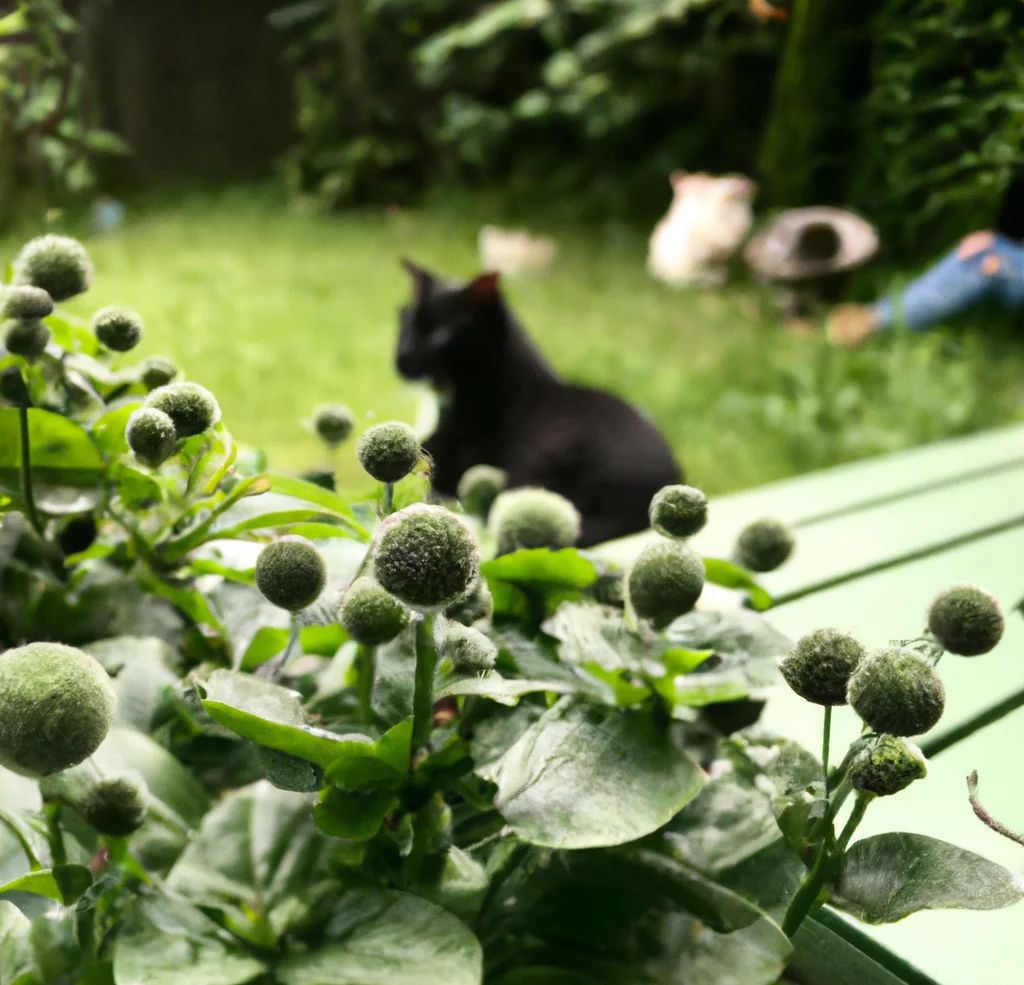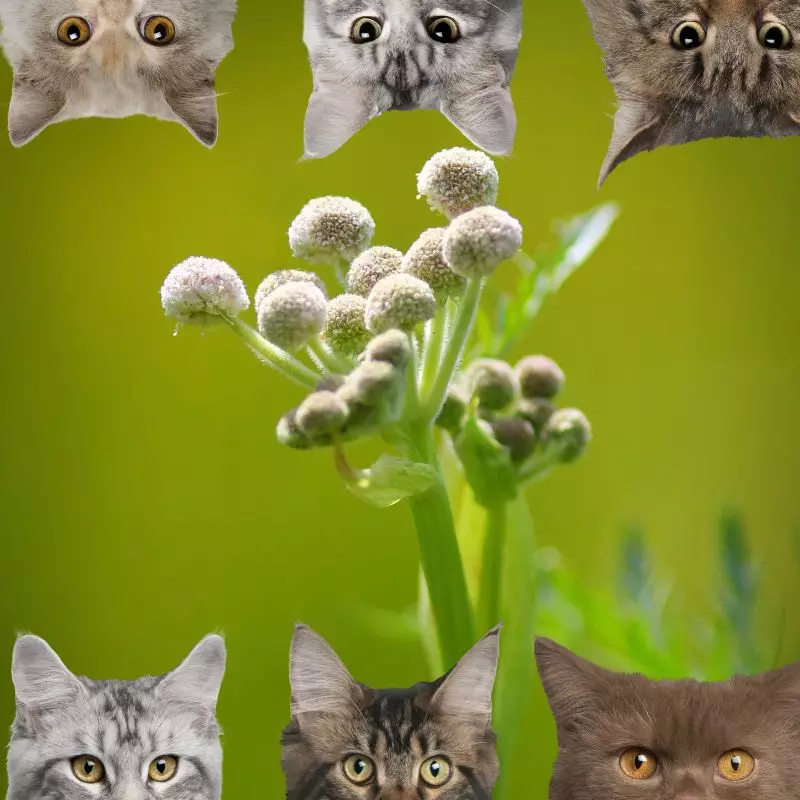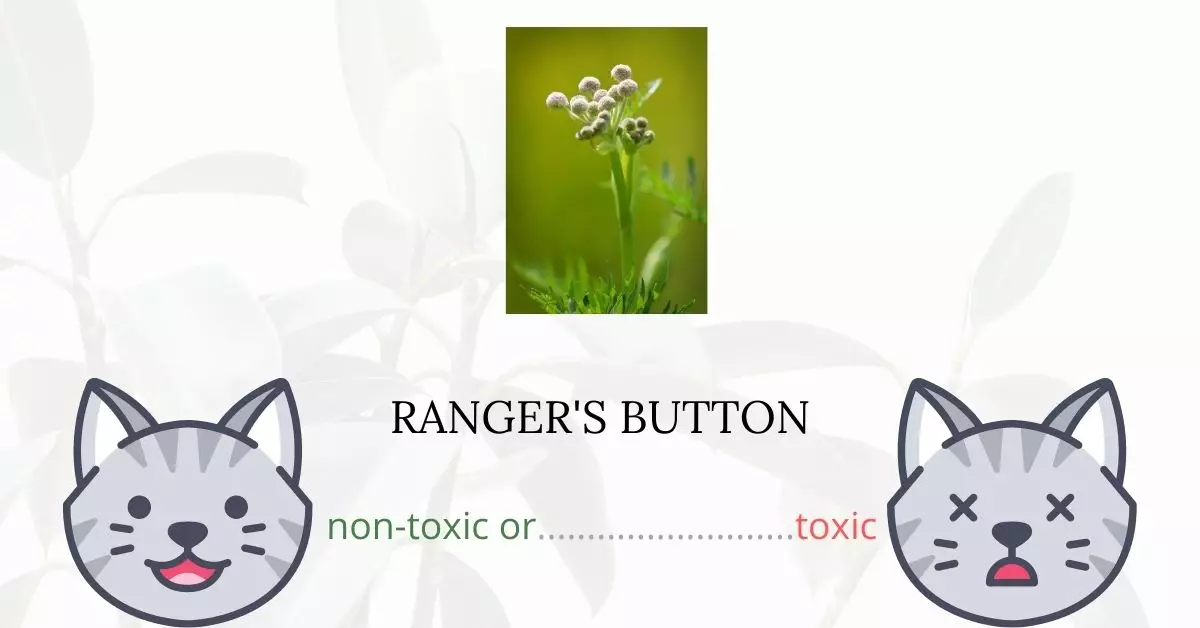The entirety of the ranger’s button plant is extremely toxic to animals, especially to cats, containing harmful compounds known as furanocoumarins. These toxins, meant to protect the plant in the wild, can cause severe photosensitization symptoms in cats when ingested. Though not often fatal, ranger’s button poisoning can lead to significant health issues, warranting immediate veterinary attention at the first sign of poisoning.
This article is crafted in collaboration with a team of experienced Doctors of Veterinary Medicine (DVMs), ensuring the provision of accurate, reliable, and up-to-date information regarding the risks posed by various plants, including Ranger’s Button, to cats. These veterinary experts contribute in-depth knowledge and insight on the potential impacts of these plants on feline health. Furthermore, to validate the information provided, extensive research has been conducted utilizing high-authority sources such as ASPCA and PetMD. Our meticulous research and the collective expertise of our contributors empower pet owners with the knowledge they need to safeguard their feline friends against plant toxicity effectively.
Clinical Signs of Ranger’s Button Poisoning in Cats

Upon exposure to the ranger’s button plant, either through contact, inhalation, or ingestion, your cat might exhibit certain alarming symptoms. Here’s a closer look at each of these symptoms and their underlying causes:
- Skin Irritation: Direct contact with the plant, especially broken parts that ooze sap, can lead to skin irritation. The chemicals in the ranger’s button can react with the cat’s skin, causing inflammation and discomfort.
- Loss of Appetite: Ingestion of the ranger’s button may disturb the gastrointestinal system of the cat. The furanocoumarins present in the plant can upset the stomach, making the cat feel nauseous or less inclined to eat.
- Depression: The general discomfort and malaise caused by the plant’s toxins can lead to behavioral changes in your cat. They might become less active, show decreased interest in play, and appear generally downcast.
- Photosensitization (Increased Reaction to UV Light): Furanocoumarins, when ingested, can cause photosensitization in cats. This means that the cat’s skin becomes more sensitive to ultraviolet (UV) light, leading to sunburn-like symptoms even with minimal sun exposure.
- Eye Damage: If the sap or any part of the ranger’s button plant comes into direct contact with the cat’s eyes or if the toxins are ingested and metabolized, it can lead to eye irritation or more severe ocular damage. Immediate washing and veterinary attention are advised in such cases.
It’s crucial for cat owners to be vigilant about these symptoms and seek immediate veterinary care if they suspect their cat has come into contact with the ranger’s button plant.
First Aid and Treatment of Ranger’s Button Poisoning in Cats

The usual first step of the veterinarian is to induce vomiting. This is usually done by giving your cat a 3% hydrogen peroxide solution orally. After that, the vet might give the cat activated charcoal to absorb any remaining poisons. Any poisons that remain in your cat’s stomach can be washed out using a gastric lavage, which is the medical word for a stomach wash.
Any lesions on your cat’s skin will need to be treated by the veterinarian. The inflamed regions will need to be properly cleaned. The vet may administer a topical treatment to the wounds to reduce any discomfort the cat is feeling. If the cat is in a lot of pain, the vet can give him some oral medicine to aid with the inflammation and irritation.
Recovery from Ranger’s Button Poisoning in Cats

Ranger’s button poisoning is seldom fatal, but it can be quite uncomfortable. If your cat is dehydrated, he may need to stay at the veterinarian’s office after treatment until he is fully recovered.
Your cat may be given a protective cone by the doctor to keep him from scratching or rubbing his sensitive skin and eyes. This must be worn till the cat is completely healed.
Prevention of Ranger’s Button Poisoning in Cats
You should completely remove this plant from your home and yard to minimize further exposure to your cat. Keep your cat indoors to avoid coming into touch with any ranger’s button plants that may be sprouting in your neighborhood.
If you love plants but have cats at home, check out these lists:





